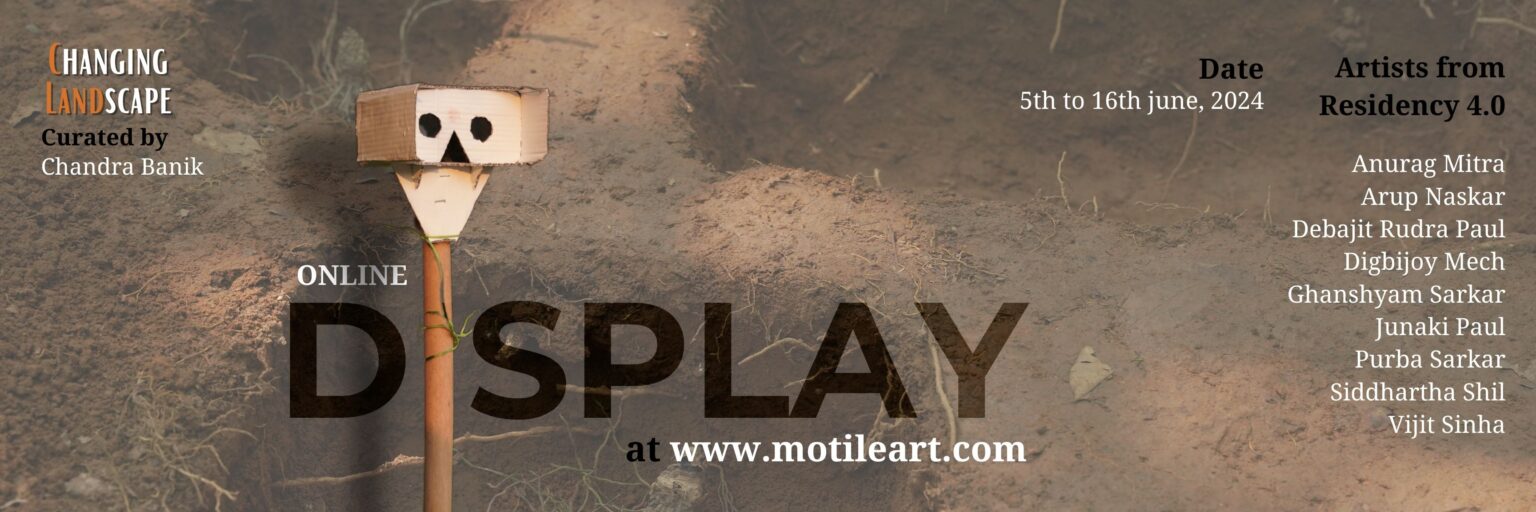
Changing Landscape” immerses viewers to theprofound and complex relationship between human and the environment. How do we perceive the continuous and inevitable transformation of our landscapes, driven by both natural processes and human intervention?
The artists supposed to be protagonists, striving to bring attention to critical environmental concerns, while acting as antagonists, whose actions contributed to the ongoing change not only in the landscape but also in the community as few works brought some overlooked to light, sometimes causing discomfort. By incorporating organic materials, found objects, and cutting-edge technologiespowerful visual narrative were created that underscore the fragility and resilience of the ecosystems. Each work serves as a visual metaphor, emphasizing the urgency of adopting sustainable practices and fostering a deeper connection to natural surroundings. The pieces on display challenged viewers to engage with the pressing realities of environmental degradation, climate change, and urbanization. Idea is to reflect our own understanding of environmental change through diverse perspectives and experiences. As some of us were born and brought up here, witnessed changes firsthand, capturing the subtle and dramatic shifts in the landscape over time. The works are imbued with a deep sense of place and continuity, revealing the intimate connection they share with their surroundings. On the contrary, few have visited the space for the first time, bringing fresh eyes to the environment, helped them to visualize the contrast between their preconceived notions and the reality they encounter, offering a unique perspective that blends imagination with observation. While few others have relocated and stayinghere for sometime, giving them the opportunity to observe and document the landscape’s evolution. These artists have also witnessed significant political changes that have impacted the environment, adding another layer of complexity to their work. Their pieces explore the interplay between policy, human activity, and natural processes, emphasizing the multifaceted nature of landscape transformation. Exhibits are way more just than an artistic presentation; it is a call to think. The abstract shapes, symbolic installations, and evocative compositions provoke introspection and dialogue, urging viewers to consider their role in shaping the future. The juxtaposition of natural and man-made elements within these works highlights the dual role of humans play in both nurturing and disrupting the environment.
Can this exhibition spark a sense of urgency and ignite a collective commitment to reconsider our role and question our actions? The artworks not only depict the current state of our environment but also envision a future, expecting humanity lives in harmony with nature.
Will we embrace sustainable practices and respect the delicate balance of ecosystems? – CHANDRA BANIK

ANURAG MITRA
Graduating with a BVA with specialization in Drawing & Painting from Government College of Art and Craft, Tripura, he gained valuable experience showcasing his works at prestigious events like the 3rd Kochi Muziris Biennale, Abhivyakti edition 3 in Ahmedabad, Motile art online exhibitions, and the Ravi Jain memorial foundation annual award show in Delhi. He also participated in Paint the Canvas 2021 in Haryana, 3rd National Level Online Art Exhibition 2022 in Odisha, and ‘The scars you can’t see’ residency project in Tripura.
Temperature Shifts
The focal point of this site-specific residency revolves around the ever-changing landscape, particularly addressing the alarming issue of rising temperatures due to environmental degradation. Growing up as a north-eastern citizen, he witnessed the gradual shift in climate, especially the unbearable summer temperatures resulting from rampant deforestation.
This project stems from a deep concern about the impact of human activities on our environment. His vision is to visually document these temperature changes across different natural and urban settings using a thermal temperature gun. By capturing and contrasting the temperatures between these spaces, he aims to create a compelling narrative highlighting the stark differences brought about by human intervention. Through this artistic endeavour, he seeks to raise awareness about the urgent need for environmental conservation and sustainable practices. These temperature readings might serve as a poignant visual representation of the consequences of over-deforestation and urbanization, urging viewers to reflect on their role in mitigating climate change. “Capturing Environmental Changes” is not just a documentation of environmental data but a call to action, inviting individuals to reconsider their impact on nature and take steps towards a more sustainable and eco-conscious future.

ARUP NASKAR
PursuedB.F.A. from the College of Visual Art, Indira Kala Sangit Vishwavidyalaya, and an M.F.A. from Govt. College of Art and Craft (Kolkata), Calcutta University. His work received recognition from the Indian Society of Oriental Art and a scholarship from the S. D. Ahuja Foundation and his achievements include participating in numerous prestigious exhibitions, handling museum objects, and attending workshops that have enriched his artistic journey. Currently, showcasing works at various exhibitions, including the ongoing 57th Annual Exhibition of Birla Academy of Art and Culture.”
Metamorphosis: A Cautionary Tale
In today’s world, where environmental consciousness is of paramount importance, his artwork delves into the dynamic relationship between human intervention and natural landscapes. Inspired by the constitutional duties outlined in Articles 51A (g) and 48A, which emphasize the responsibility of every citizen to protect and enhance the natural environment, this artwork serves as a poignant reminder of our collective duty towards nature.
The idea revolves around the transformation of landscapes, particularly the man-made alterations that impact the natural world. The work depicts a symbolic representation of this change through a juxtaposition of shapes against a backdrop of a rubber forest, intertwined with scattered dead leaves. While the green of the rubber plantations might appear lush and appealing, it masks a harsh reality. Rubber plantations are harmful to the weather and local ecosystems; what seems like a green expanse today is actually a harbinger of future environmental degradation. Although they may provide a livelihood now, they will eventually render the environment uninhabitable.
This composition creates a visual narrative that highlights the contrast between human-induced alterations and the organic beauty of nature. His aim is to provoke contemplation and awareness regarding the fragility of our natural environment. The presence of dead leaves serves as a metaphor for the consequences of neglecting our environmental responsibilities—a warning that without conscious efforts to protect nature, the lush greenery we cherish today may fade into barrenness tomorrow. The leaf-made backdrop might seem appealing to the eyes, but it covers the green from where the end of hope starts. If we do not take care of it today, we will find ourselves in a state from which turning back will be nearly impossible.
Through this work, he invites viewers to reflect on the interconnectedness of our actions and the environment, urging us all to embrace compassion for all living creatures and to take concrete steps towards preserving the beauty and vitality of our natural world. This call to action emphasizes the importance of sustainable practices and responsible stewardship of our ecosystems, highlighting that the choices we make today will shape the environment for future generations

DEBAJIT RUDRA PAUL
His artistic journey began with a Bachelor’s degree in Fine Arts from Government College of Art and Craft, Agartala, followed by a Masters in Visual Arts from University of Kalyani, West Bengal. Inspired by the vibrant colours and intricate details of his surroundings, his artwork resonates with introspective societal observations and the vastness of nature. He has-had the privilege of participating in numerous exhibitions, workshops, and art residencies across India, where he’s had the opportunity to showcase his dynamic artistic vision. His commitment to refining his craft and exploring new avenues of expression in the contemporary art scene drives him to continually evolve as an artist.
Changing Landscape
He is fascinated by the intricate layers of visual changes that unfold in our landscapes, reflecting the dynamic interplay of human migration, cultural values, and evolving societal dynamics. Surjyamoninagar, with its influx of people from varied regions, becomes a canvas where diverse cultural hues merge, reshaping the visual fabric of the environment. This continuous evolution sparks his curiosity, leading him to observe and document the subtle nuances that define each phase of transformation. Through this work, he seeks to delve deeper into the narrative of change, exploring not just the surface alterations but also the underlying stories and motivations driving these shifts. Each element within the landscape becomes a thread in the tapestry of change, weaving together a visual dialogue that invites viewers to ponder the complexities of human interaction with their surroundings. The visual dilemma he aims to depict is not just about physical alterations but also about the emotional and psychological responses evoked by these changes. It raises questions about our relationship with space, memory, and identity, prompting contemplation on the essence of belonging and adaptation in evolving landscapes. Ultimately, this exploration serves as a reflection of our collective journey, where the past converges with the present, shaping the contours of the future.

DIGBIJOY MECH
He holds a PG Diploma in Graphics Design from MAAC and completed his Bachelor of Visual Arts from Government College of Art & Craft, Agartala (India). Recently, he attained a Master’s of Fine Arts from Tripura University, Suryamaninagar. Notable exhibitions where his work has been showcased include the Delhi Art Council Exhibition in Agartala, Kerela Muzirious International Exhibition in Agartala, Binaria.art Online Exhibition in Brazil, and Nepal Art Council International Exhibition inKathmandu.
Changing Landscape to Change in Landscape: Collective Objects with Sound & Nature”
The journey began with a deep desire to understand and connect with the landscape surrounding his location, which was dominated by expansive rubber forests. As he immersed himself in the environment, taking walks through the dense rubber forest, he became attuned to the sounds resonating within its depths, sparked a contemplative process, leading him to reflect on the state of the environment.
The landscape he encountered was a result of various factors, including governmental decisions to promote rubber plantations as an alternative industry which had a gradual but noticeable impact on the once-diverse natural habitats, as the rubber plantations encroached upon previously untouched areas. Concurrently, permissions for liquor shops and relaxed consumption criteria had led to increased alcohol consumption among residents, further contributing to the changing visual and social dynamics of the landscape.
In response to these transformations, the artist’s project took on a dual purpose. Collaborating closely with the local community, especially the enthusiastic young children from the nearby village, he embarked on a transformative journey. One aspect of this journey involved repurposing discarded glass bottlesinto musical instruments, which not only addressed the environmental issue of waste but also engaged the community in creative expression.He not only altered his perception of the landscape but also catalysed a collective effort to reimagine and repurpose elements of the environment.
Another facet of the project delved into the intricacies of the rubber-making process within the plantation. Drawing inspiration from this environment, he incorporated elements like coconut tree barks, a byproduct of the region’s agricultural activities, into his artistic endeavour. These barks were repurposed into sheets of paper or canvas, providing a sustainable medium for the local children to express themselves artistically. This creative outlet not only diverted attention from the adverse changes in the landscape but also empowered the community to find beauty and meaning amidst challenges.

GHANSHYAM SARKAR
Confident, creative, and optimistic, and a believer in simplicity, honesty, and punctuality. With a BVA in painting from GCAC Agartala, Tripura University and an MVA in Visual Arts from Assam University, he has showcased his artistic talent in many national level exhibitions and received awards for installation art. Experienced as an NSS Volunteer, he brings dedication and a positive outlook to everything he does. Passionate about creating meaningful art, he strives to make a positive impact through his work and contributions, aiming to inspire others with his creativity and dedication to artistic expression.
Environmental Alarms
In this endeavor, he has created a series of installations that serve as environmental alarms, highlighting the interconnectedness between human actions and the natural world. The concept revolves around the placement of warning signs, typically associated with electrical hazards, in unconventional locations such as trees. This juxtaposition aims to draw attention to the vital role trees play in our environment and the potential dangers that arise when they are threatened. The installation strategically places “DANGER” signs on power lines and trees, symbolizing the parallel risks associated with both. Just as grabbing onto power line pillars can lead to dangerous situations due to electrical currents, the act of cutting down trees, which are essential for the environment’s health and vitality, can also result in perilous consequences. The “DANGER” sign on the tree works both ways: the tree itself is in danger due to human activity, and it represents the danger humans face by ignoring the environmental damage caused by urbanization and deforestation. Through this work, he aims to provoke contemplation on the consequences of environmental neglect and the urgency of preserving our natural surroundings. By associating familiar warning signs with environmental elements, the installation serves as a visual metaphor, urging viewers to recognize the interconnectedness of human actions and environmental impact.
A SILENT PLEA FOR HEALING
Ghanshayam created a frame, with a reference to an already existing structure that took a form, and used it to enclose a specific space within and sealing it with black cloth from top and bottom leaving a blank frame in between to see through. His intention was to catch the specific small source of light in a dark environment, which is usually a character of rubber forest, and observes how it draws visual attention. To him, the light passing through this darkness became a guiding beacon, showcasing a way forward. The juxtaposition of the structural form and the landscape created a visual narrative that evoked an urbanization feel. This exploration delves into the interplay of light and darkness, symbolizing the delicate balance between progress and preservation. The frame and its contents served as a visual representation of the challenges faced by our environment amidst rapid urbanization. Through this artwork, he aimed to provoke introspection about our impact on landscapes and the need to protect and nurture our natural world. As he peered through the frame, the light revealed a path and illuminated the cut parts of a tree within that frame. This prompted him to wrap the cut parts of the tree with a bandage, symbolizing the wounds inflicted on nature. Each layer of the bandage carried a weight of emotion, as he wrapped the cut part of the tree with the profound thought that, much like the tree sacrificing itself to serve us, we too are hurting our environment with practices like the rubber plantation. The act of bandaging held the intention of preventing the wound from expanding further, a symbolic representation of the damage caused when leaving environmental wounds uncovered. The light within that frame became a metaphorical symbol of hope and renewal, urging viewers to reconsider their role in shaping the future of our landscapes.

JUNAKI PAUL
Her academic journey includes a B.V.A in Sculpture from Govt. College of Art & Craft, Tripura University, followed by an M.F.A. in Sculpture from Visva Bharati University, Santiniketan. Her artistic talents have been showcased in various exhibitions across India, including prestigious venues like Dhoomimal Art Gallery in Delhi and the India Art Fair, Mumbai. She has also received recognition for her work, including awards from Tripura Rabindra Parishad and Reserve Bank of India, demonstrating her commitment to artistic excellence and innovation. Now live in and practicing in Kolkata.
Line, with joining dots on graph of Time
This work revolves around the concept of change over time, particularly the transformation of landscapes, communities, and structures. The exploration begins with conversations with local communities, gathering insights and stories that shape the narrative of this project. Before embarking on the artistic journey, she engages with locals, establishing a meaningful connection with the location and its heritage. The project unfolds as a visual representation of the evolving landscape, highlighting the significance of rubber trees in the livelihood of villagers. The abundance of rubber trees in the area serves as a central motif, symbolizing growth, sustainability, and the passage of time. Through meticulous observation, she notices the distinct lines on rubber trees, created when their bark is broken for sap collection. These lines, accumulated over time, inspire her to reflect on the concept of time as a continuous line, much like a graph depicting variables or the evolution of values. Incorporating elements of local heritage, she utilizes old sari dhotis contributed by locals, stitching them into long lines and filling them with dry leaves from rubber trees. This representation not only captures the essence of change and continuity but also pays homage to the history and traditions of the region. The iron lines buried between doors, once used for security, also serve as a poignant reminder of the area’s past, where communities navigated changes with resilience and adaptation.
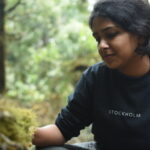
PURBA SARKAR
Pursuing her Masters and graduated in Fine arts from Rabindra Bharati University, with specialization in painting. With a strong academic foundation and extensive experience in traditional art, sculpture, mixed media, and digital art, she strives to make meaningful contributions to the art community. Her artistic journey includes participation in prestigious exhibitions and residencies, reflecting her dedication to exploring diverse artistic expressions and themes.
Earthbound elegance
Her artistic exploration embodies the essence of “Changing Landscape” by reflecting the dynamic relationship between humans and the environment. Through her use of natural materials and abstract shapes, she captures the continuous transformation of landscapes, mirroring the interconnectedness between human actions and the natural world. She digs the ground, carefully setting aside the excess soil to evoke the essence of a burial ground—not for humans, but for nature itself. This act symbolizes a fresh wound, a poignant reminder of the lasting impact of human negligence. The non-biodegradable waste buries will not decay quickly; it will linger, a stubborn scar on the landscape. Each piece of waste represents a moment of disregard for the environment, accumulating to form a stark, visual metaphor for the damage inflicted on the earth. This burial is not merely a physical act but an emotional one, as it underscores the slow, painful healing process that nature must endure. The soil, once a symbol of fertility and life, now cradles remnants of human excess, serving as a sombre testament to our collective responsibility. This deliberate act of interment captures the essence of a wound that will take a long time to heal, reminding viewers of the enduring consequences of their actions. Through this evocative process, she invites a profound reflection on the need for conscious, sustainable practices to prevent further harm and promote the recovery of our precious landscapes. Her process of gathering materials from the forest and incorporating them into her artworks resonates with the theme of adaptation and evolution, highlighting the ever-changing nature of our surroundings. By creating a visual narrative that juxtaposes natural beauty with human-induced alterations, she emphasizes the urgency of adopting sustainable practices and fostering a deeper connection to our environment. Her artworks provoke introspection and dialogue about our impact on landscapes, encouraging viewers to engage with the pressing realities of environmental degradation, climate change, and urbanization.

SIDDHARTHA SHIL
He is an accomplished artist with a B.V.A in Painting from the Government College of Art & Craft, Agartala, an M.F.A in Painting from Visva-Bharati University, Shantiniketan, and an M.F.A in History of Art from the same university. His work has been showcased in numerous prestigious exhibitions, including the Kochi Student Biennale and the 63rd National Exhibition of Art by Lalit Kala Akademi. He has also participated in various residencies and workshops, such as those organized by Motile Art and Lalit Kala Akademi. His dedication to his craft has earned him several awards, including the Best Artwork title at the Government College of Art & Craft, Agartala, and the Sumangal Sen Memorial Scholarship. Now live and practices in Mizoram.
Is It Like This?
Size- 60 feet (approx)
Material- cloth, nylon, metal balls
With natural conditions so many other aspects are participating to forming a landscape. Different climatic and geographical condition, natural resources, economical, geopolitical aspects and of course the attitude of engagement of human with surrounded environment, all these aspects are involved in changing and shaping a landscape. This change could be healthy or unhealthy or sometime both, and could have Different perspective for debate.
As Artist felt, there is a continuous tension working all over behind this process of ‘Change ‘. Humans are continuously trying to make their home more comfortable and cozier with all possible and immediate arrangements. Adjusting the elements of nature and picking the path of convenience, sometime without thinking much about the consequences. These all decision and all other influential aspects works like vector forces to reshape and recreate the landscape.

VIJIT SINHA
vijitatreya1@gmail.com
He is an emerging artist from Agartala, India, currently pursuing his Bachelor of Visual Arts in Painting at the Govt. College of Art and Craft, Agartala. His practice is primarily drawing-based, focusing on keen observations of his surroundings and exploring the potential of various mediums. He has participated in notable exhibitions, including the Students’ Biennale at Kochi Muziris Biennale 2022-23 and Motile’s 3rd Online International Exhibition in 2023. His work reflects a deep engagement with visual elements and spatial dynamics
exploration of changing landscapes
In his exploration of changing landscapes, the artist focused on capturing the transformative power of light within the rubber forest. The delicate rays of light filtering through the dense canopy and casting intricate patterns on the ground symbolized the subtle yet profound changes occurring within the environment. Using the cyanotype process on a 12-foot cloth, he documented these fleeting moments, creating striking blueprints that stood out against the monochromatic backdrop of the forest.
This artwork not only showcased the artist’s technical skill but also reflected the broader theme of transformation. Just as the landscape was evolving due to political decisions and environmental changes, the artist’s work mirrored this continuous process of change. The light, representing hope and resilience, pierced through the forest, much like the artist’s vision aimed to penetrate the layers of transformation within the landscape.
The cyanotype print symbolized the natural and human-induced changes affecting the environment. The rubber plantations, resulting from governmental policies, had altered the once-diverse natural habitats. By documenting the light within this altered landscape, the artist highlighted the resilience and adaptability of nature amidst these changes.

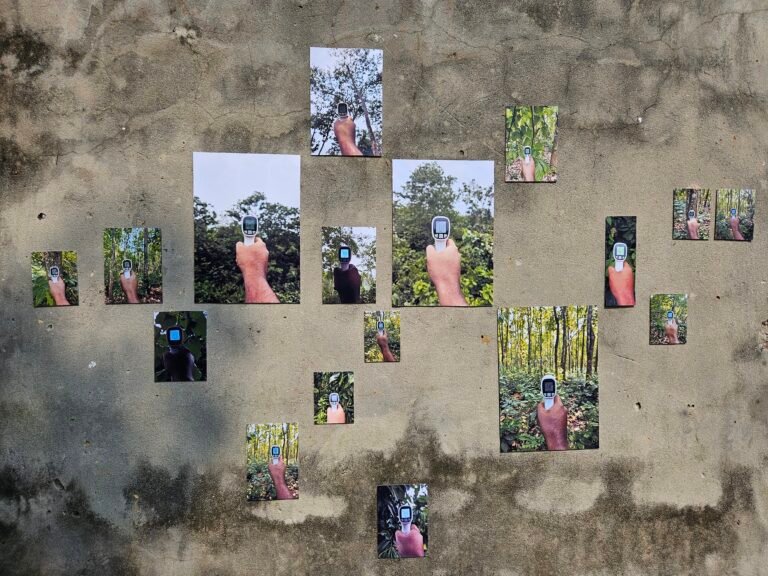

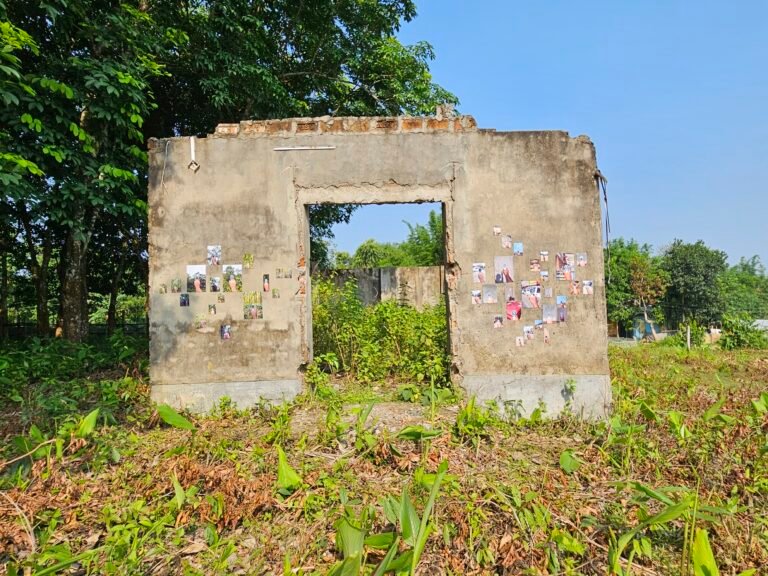
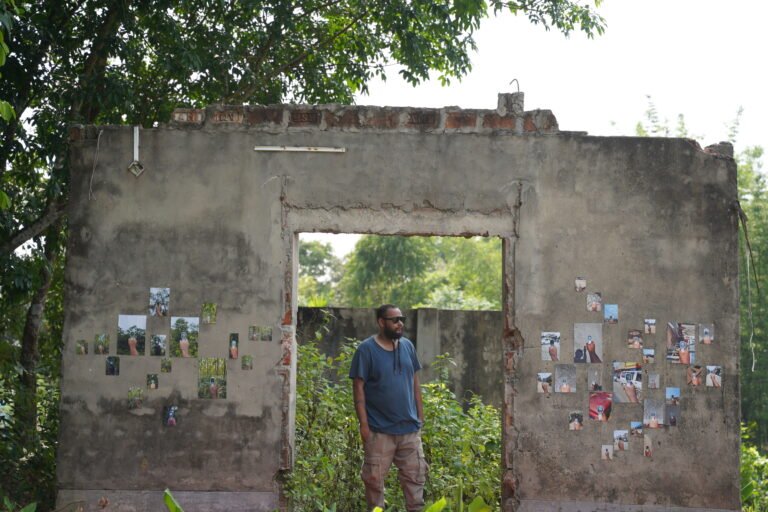



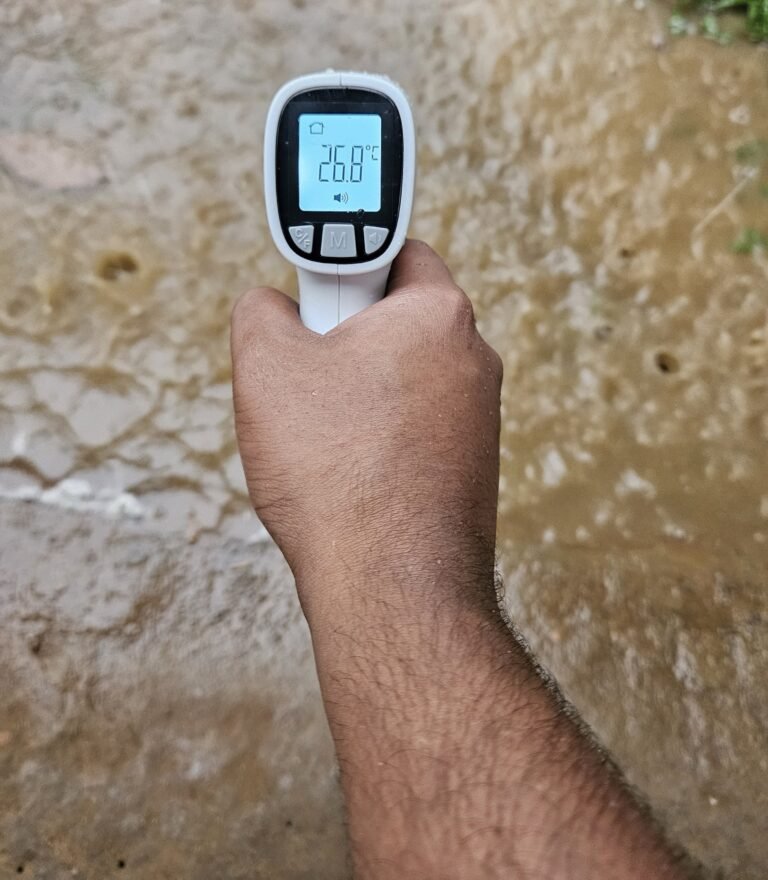
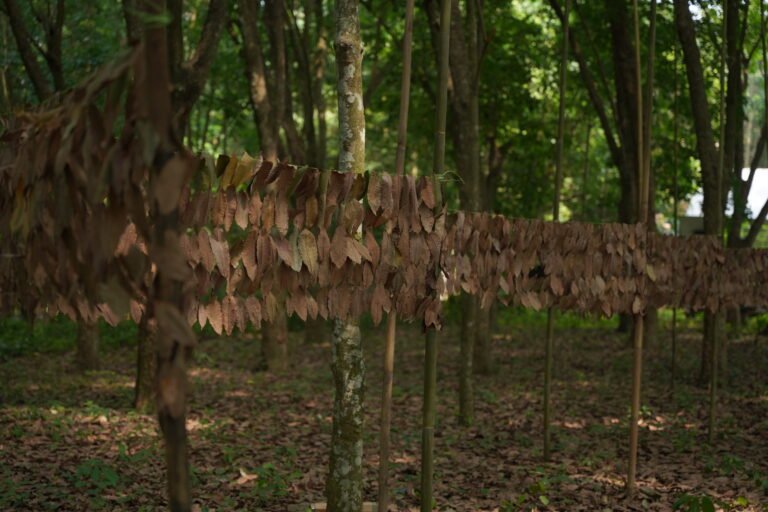

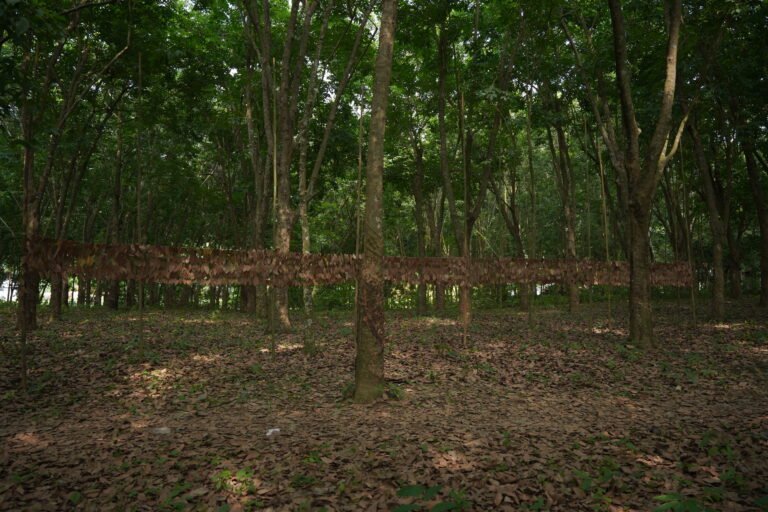
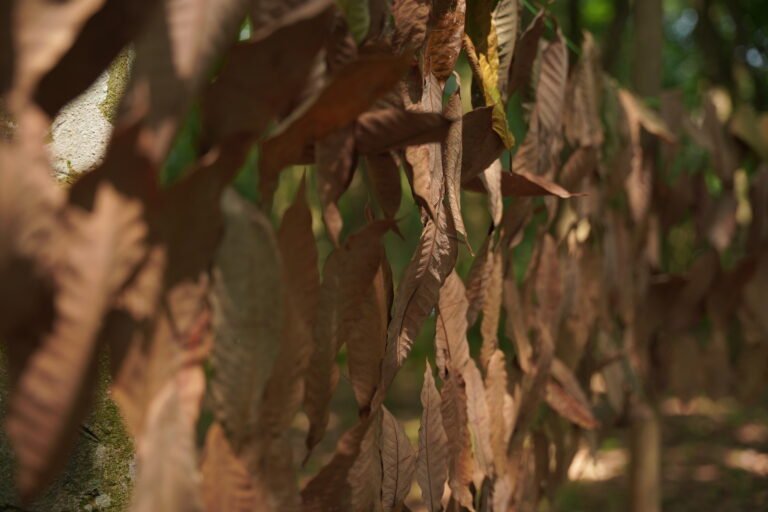
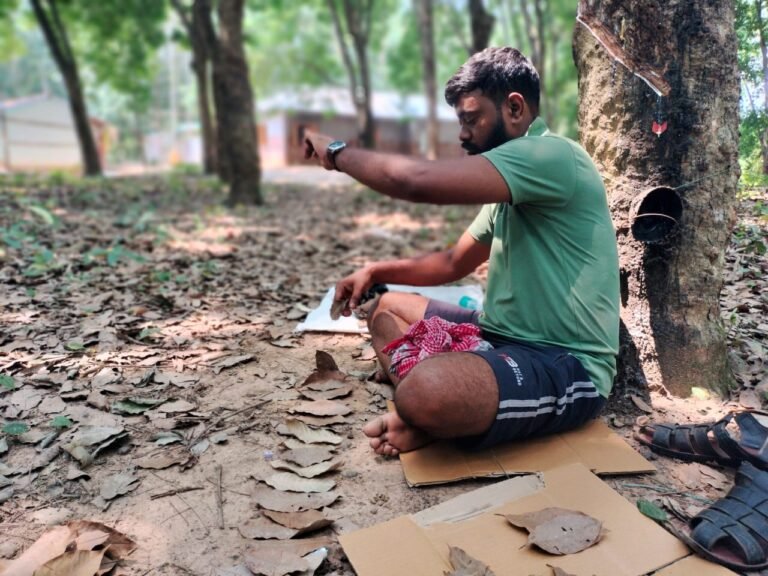
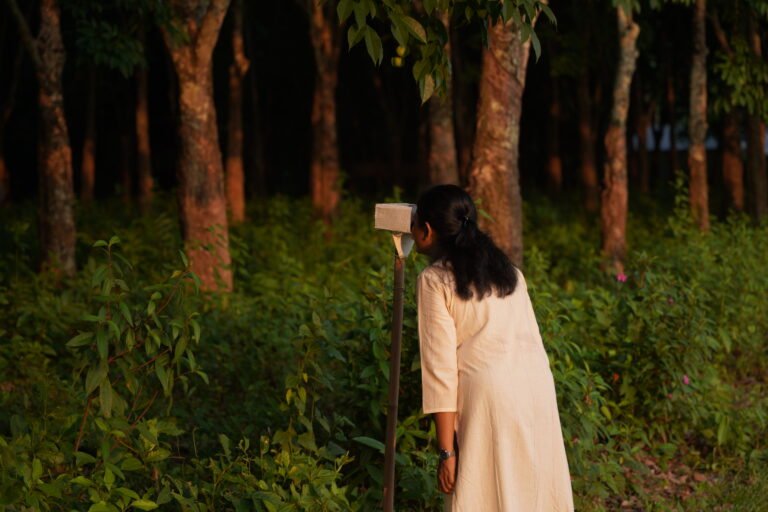
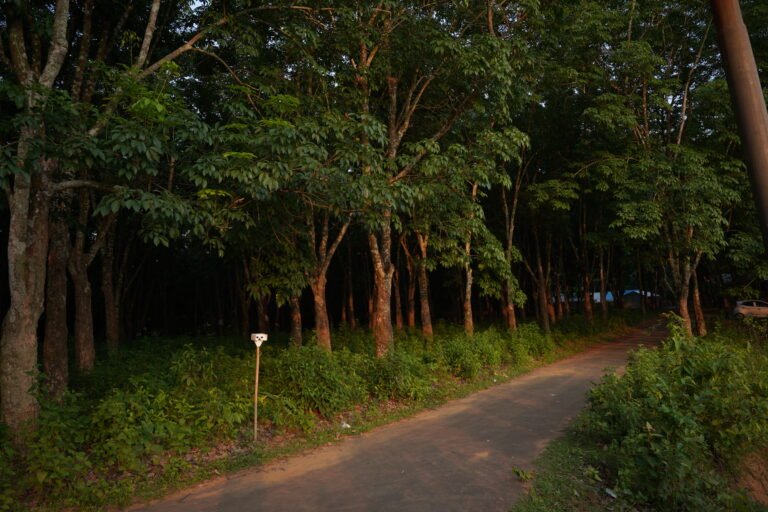
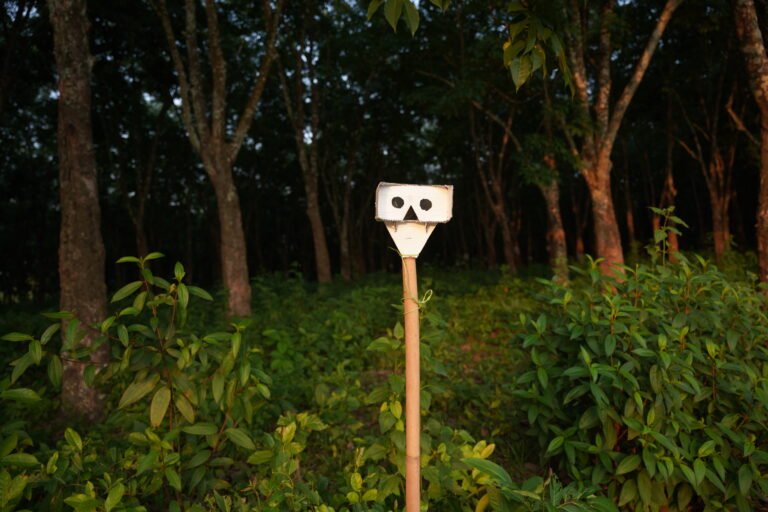
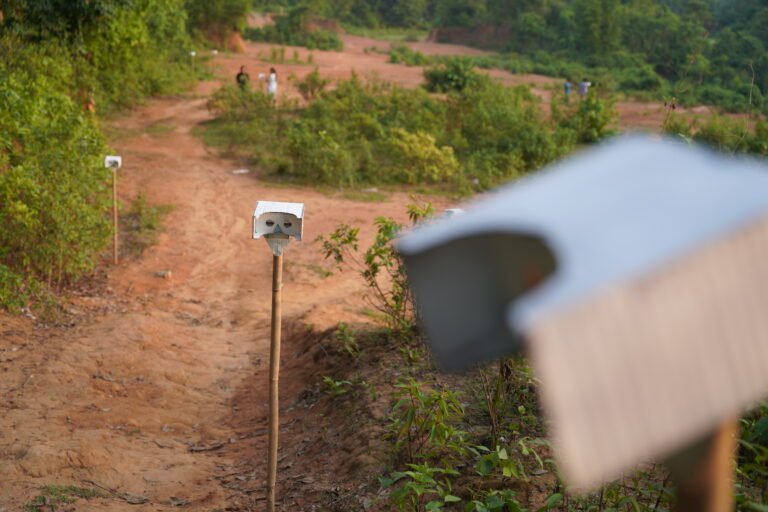

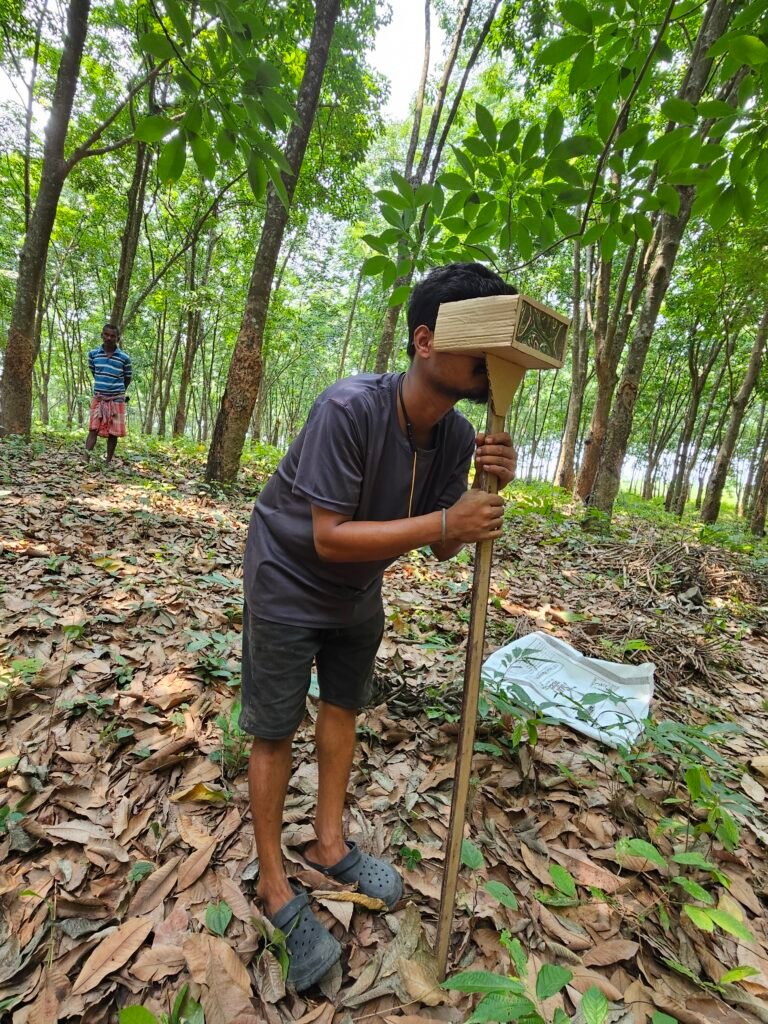
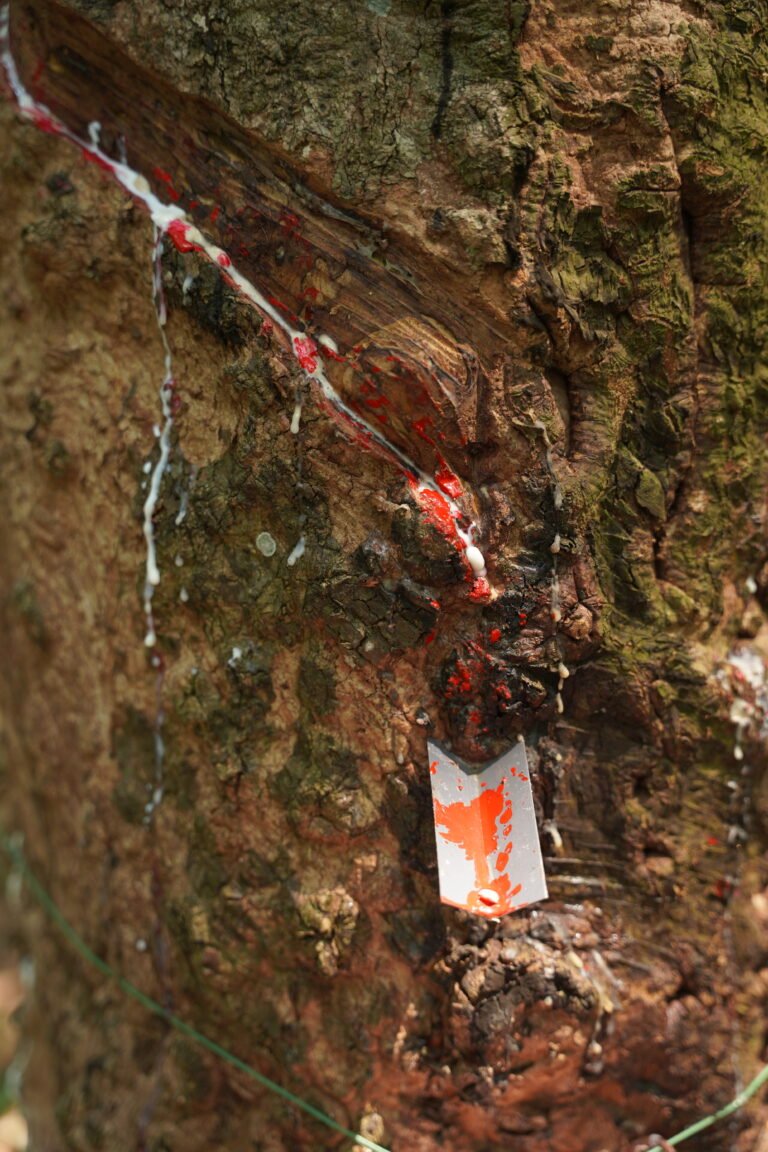

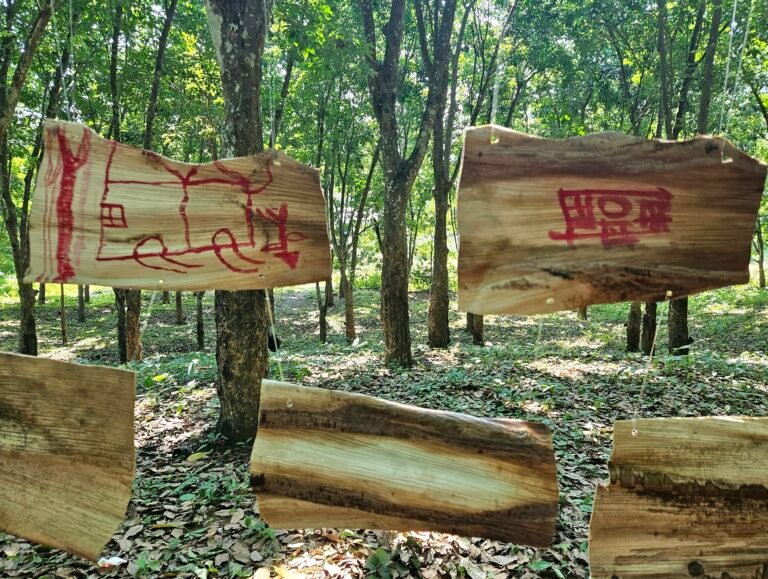



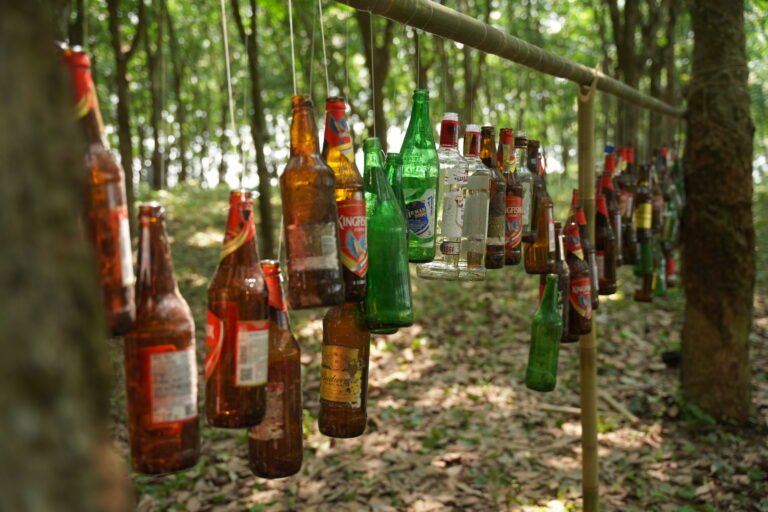
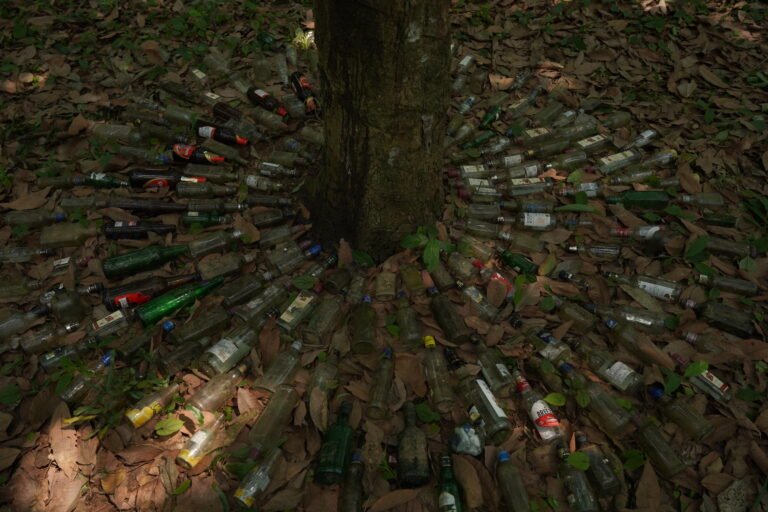
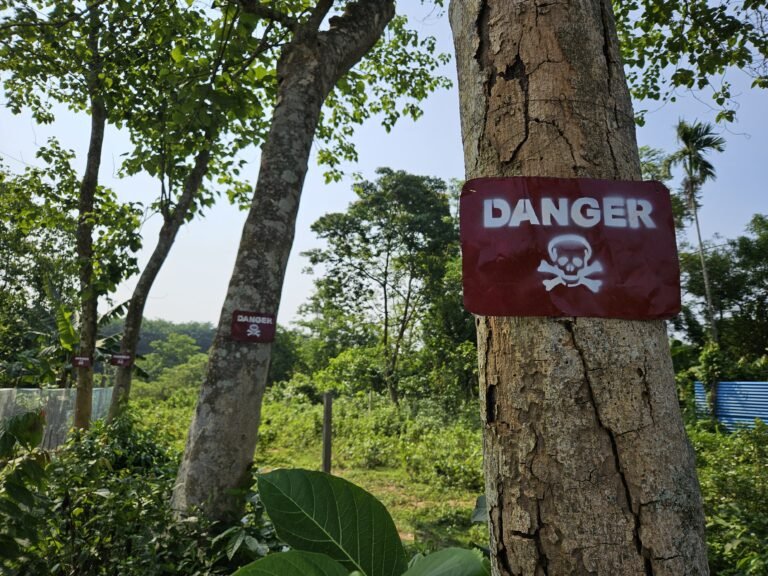


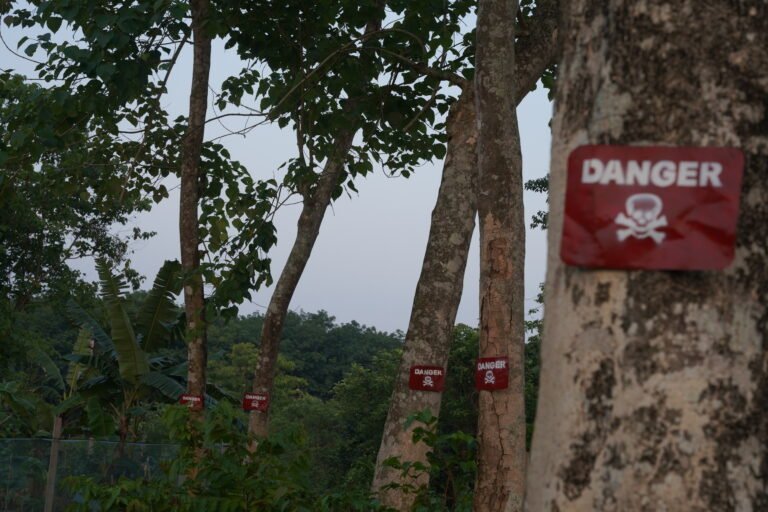
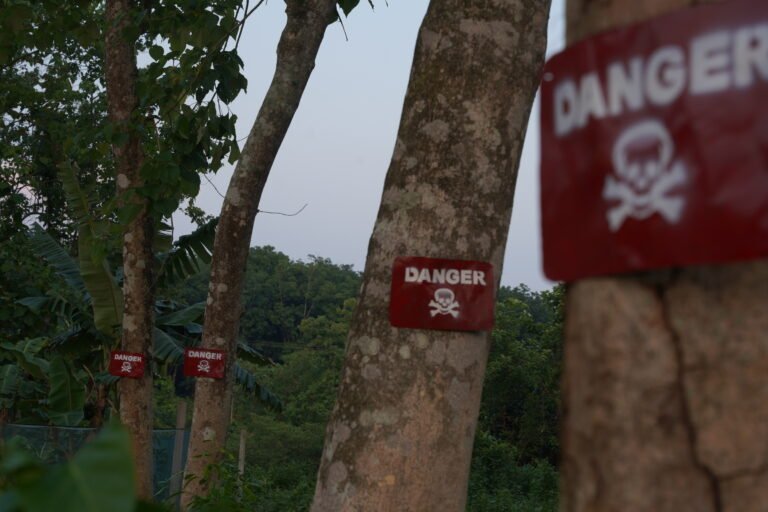
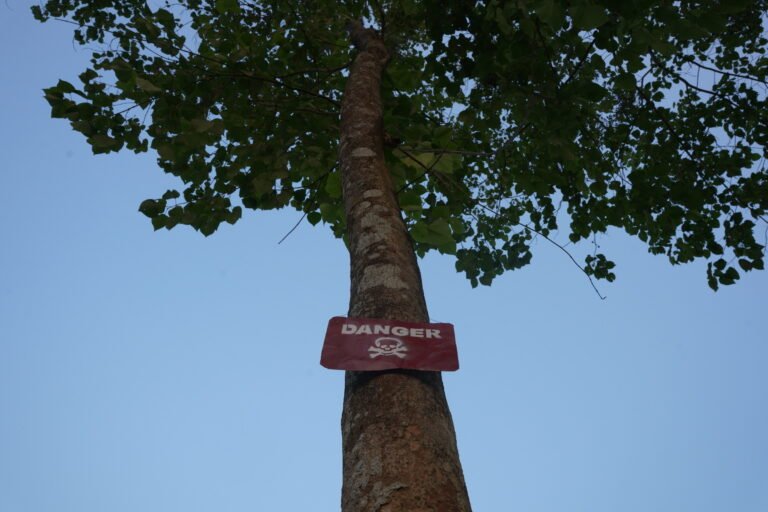


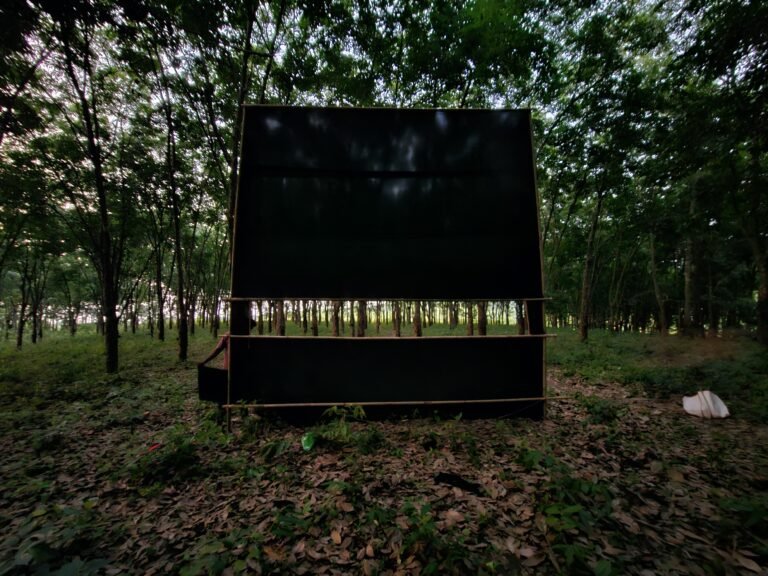
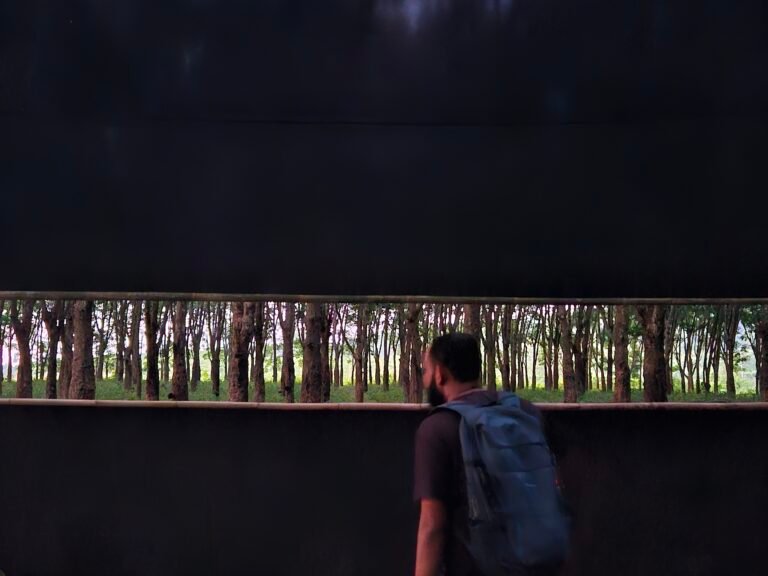

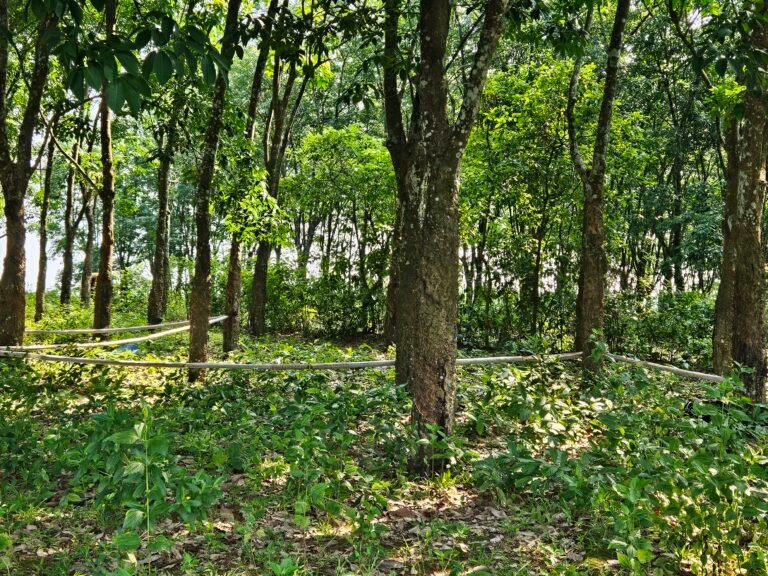

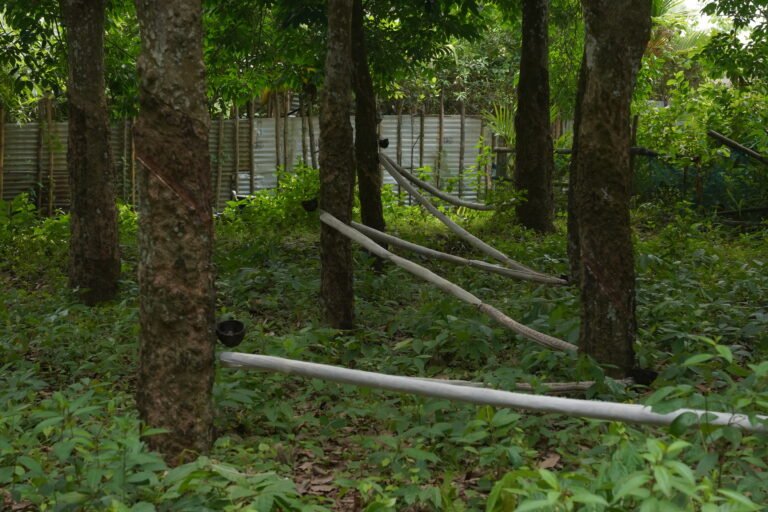


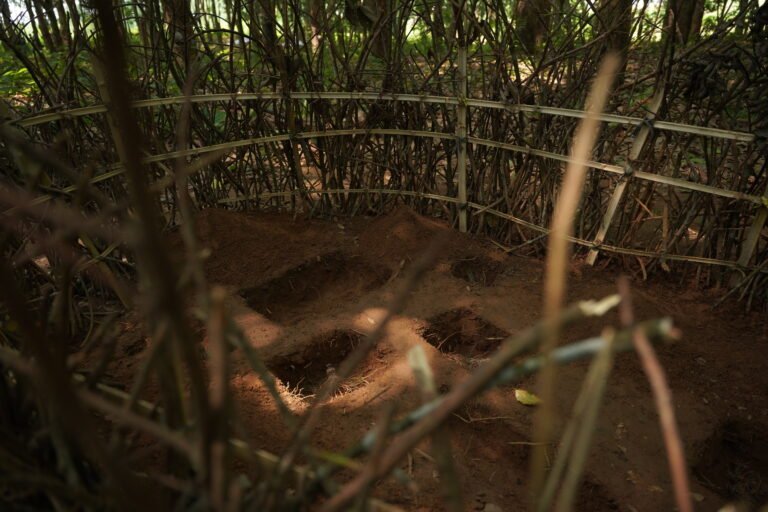
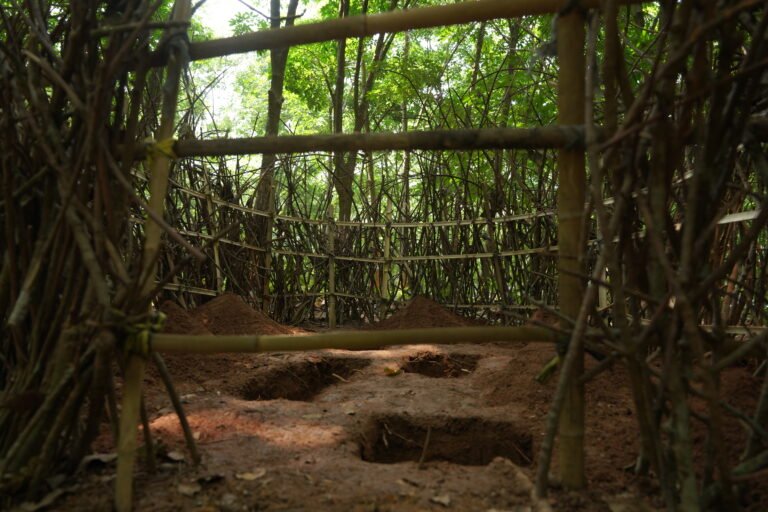
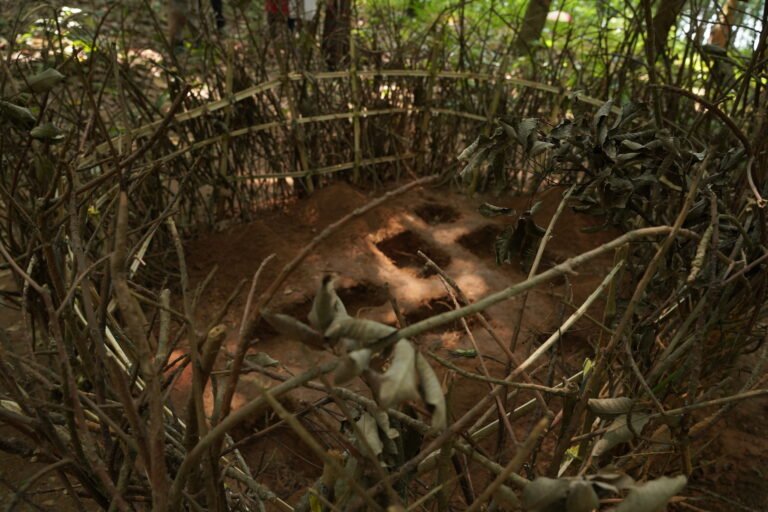
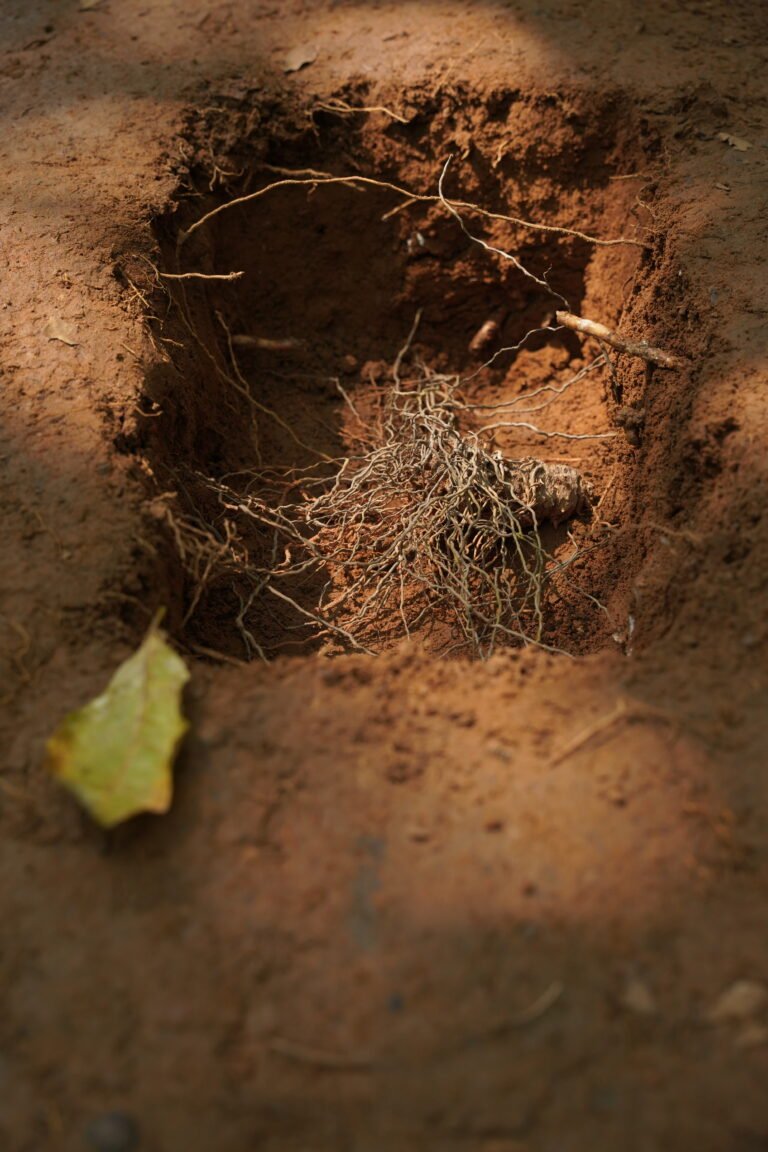
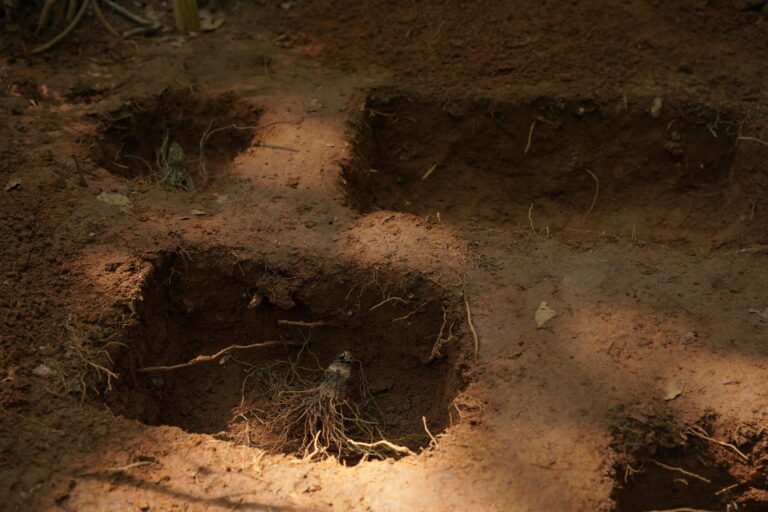
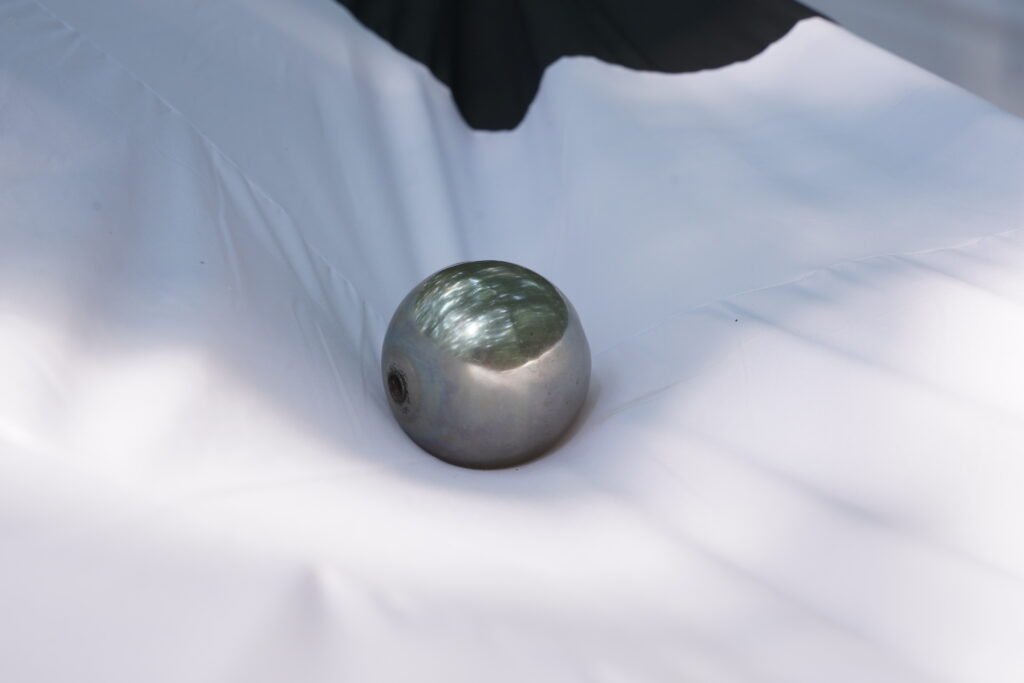
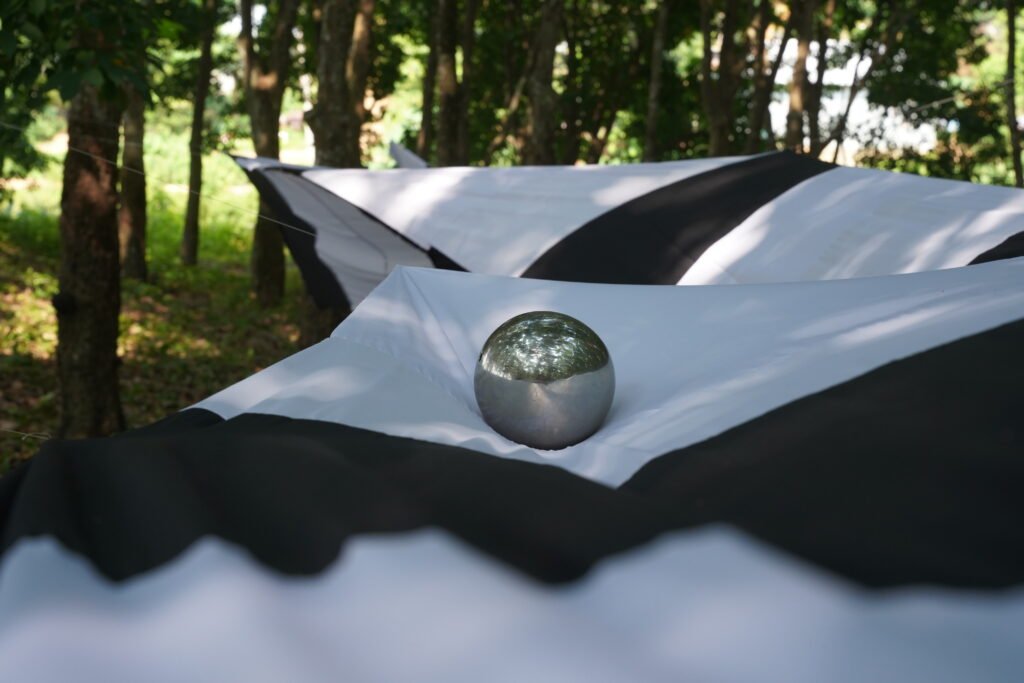
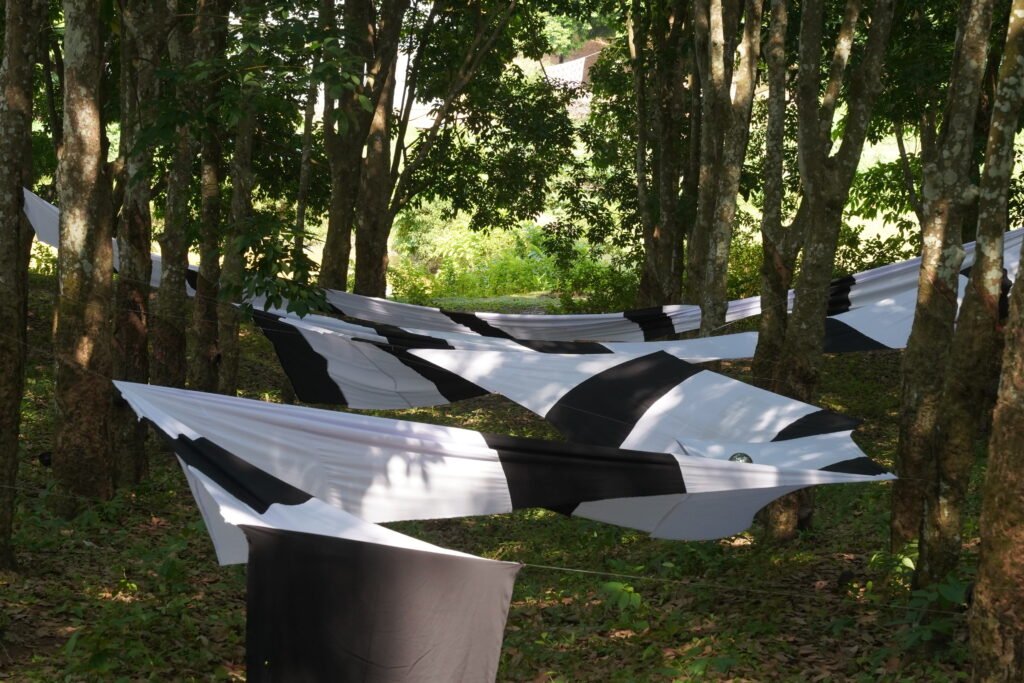

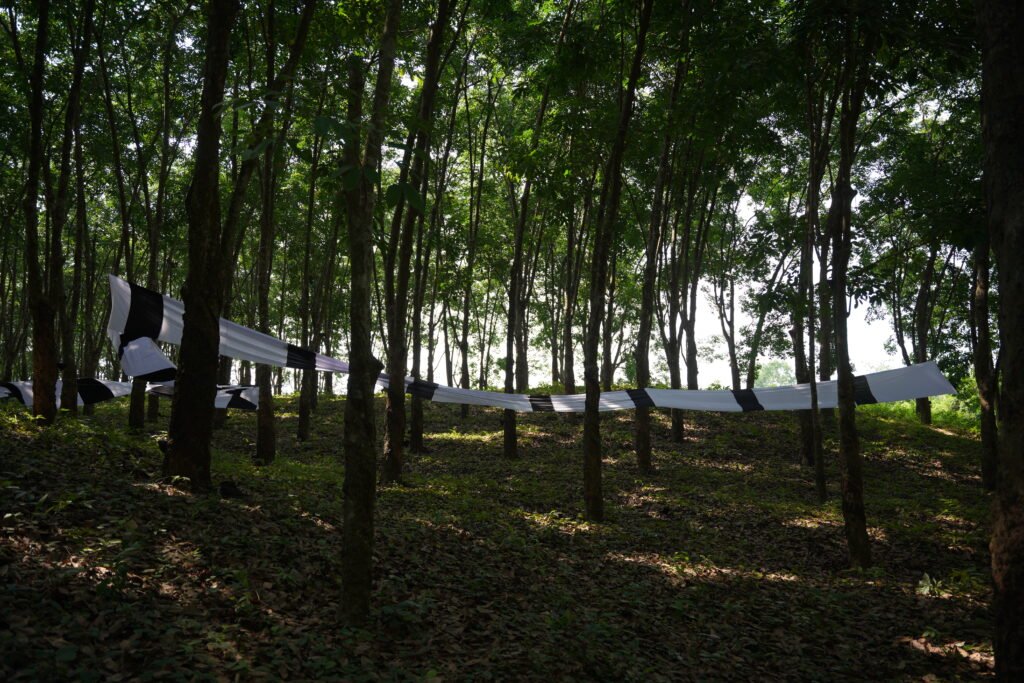


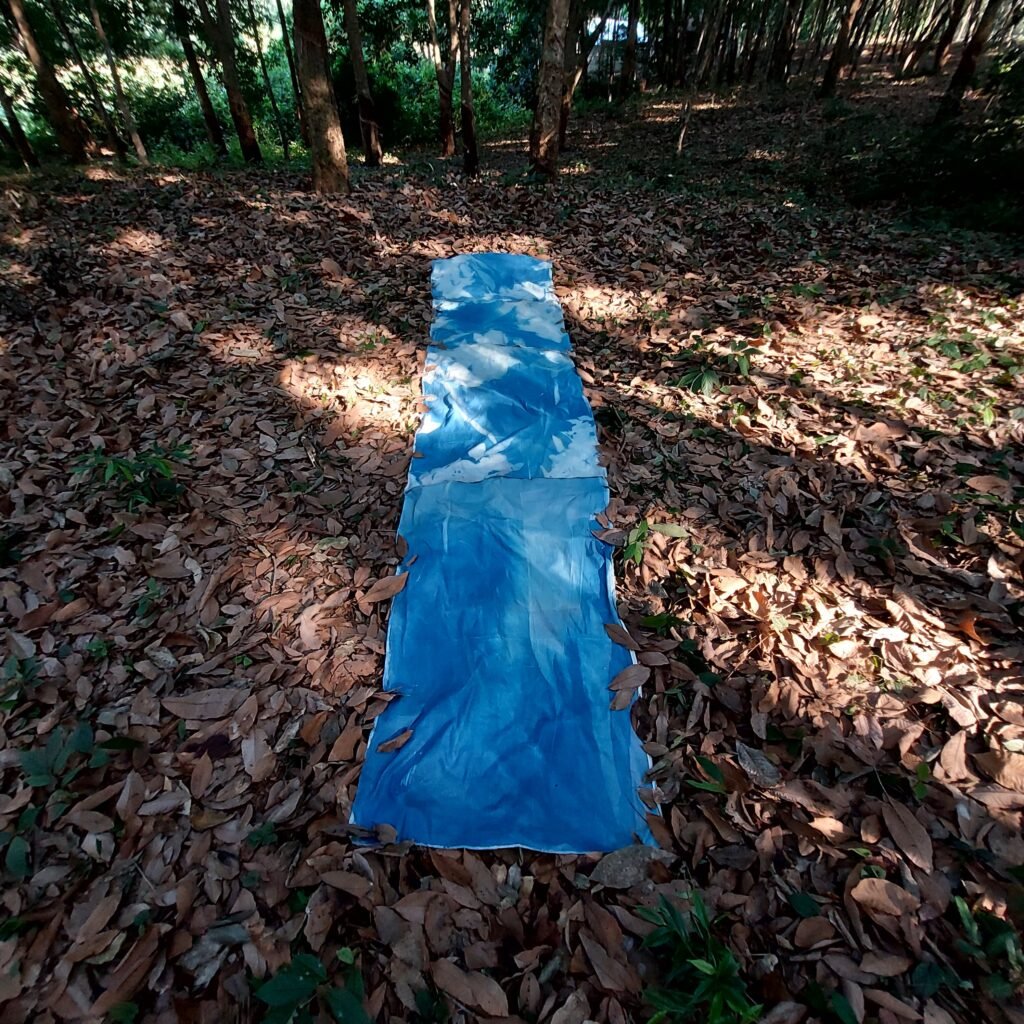

Very interesting 💚💚💚
A very good project,,, ,, personally I love each and every display,,,,🍀
As usual unique thoughts and their mesmerising executions.
Every piece of work is fantastic and unique.. Every idea is innovative.. Arup’s work is very impressive and extraordinary.. I enjoyed watching all works..
Sundor🌻
Acha hua h kaam👍🏼
Many congratulations
So far I’ve gone through some of the works of some of the artists as it has been presented in the said website. It’ll take time for me to check all the images and write-ups about the works. However, I noticed some typos initially, which basically are lacking space between two words. Anyway, thanks for providing me with the link and as such, letting me watch the online display.
Congratulations 🙌
khub valo… Best wishes for my site…
Congratulations sobai ke. Khub bhalo hoyeche
Bah
I really appreciate the effort. I hope I can inspire all of you to imagine practice beyond the rat race and embrace collective coexistence. My 7th catalyst is the soulful villager – we have to hold each other up. I am feeling good about the effort you are putting in.
Great initiative for this kind of project . The young talented peoples are really doing interesting site specific with their dialogues and thoughts which must be create one positive impact about the consciousness of nature and greenary. My heartiest wishes for all you .
Very nice work done by all👍
Arup’s artwork beautifully contrasts the vibrancy of a green background with the starkness of dead, lifeless leaves, perhaps serving as a poignant reminder of the importance of preserving our environment and protecting the delicate balance of nature. It prompts us to reflect on our role in sustaining the beauty and vitality of our planet. Amazing use of natural resources and the scale of the artwork is breathtaking.
I also enjoyed seeing so many different perspectives of showcasing this issue. Congratulations to each and everyone for your beautiful demonstration.